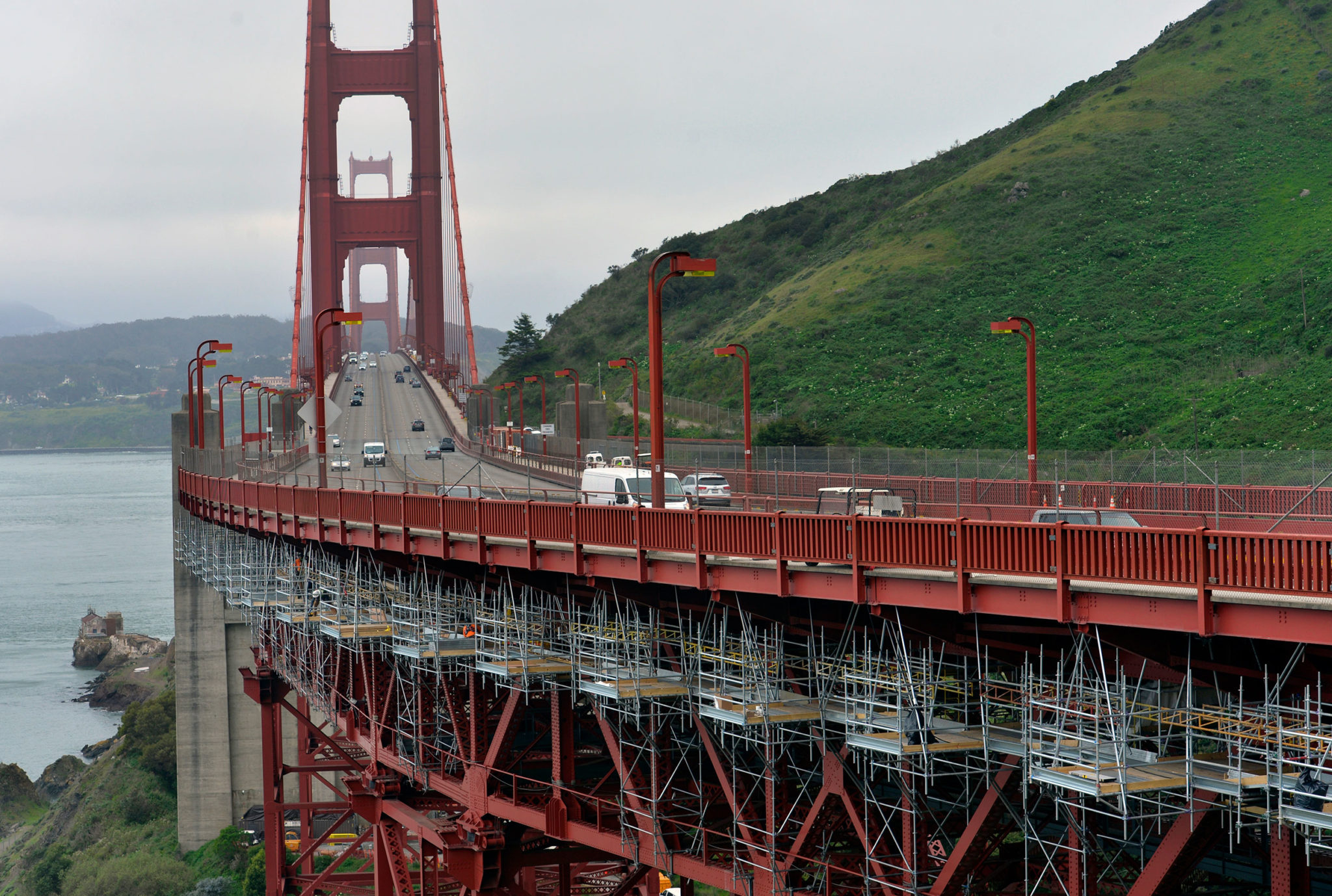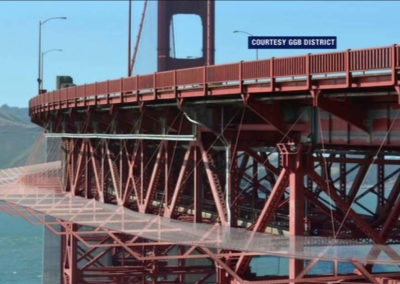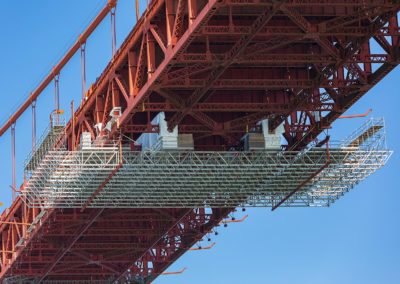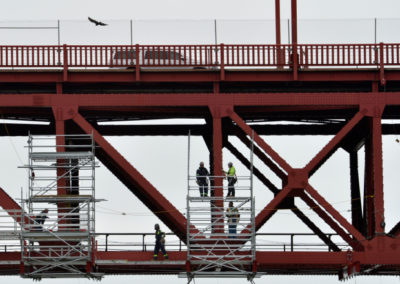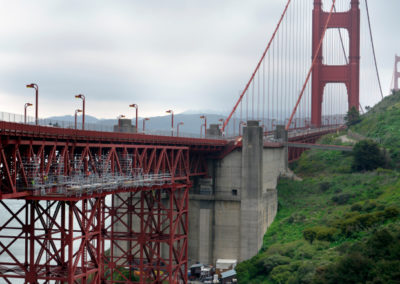Golden Gate Bridge Physical Suicide Deterrent System and Wind Retrofit
Construction of the barrier began in late 2018, but the project is more complex than installing support beams and the net, which alone is a nearly $190 million endeavor.
Another $19 million will be spent on a wind retrofit of the bridge. The bridge can withstand sustained winds of up to 70 mph from the west, but the barrier would change this, according to the bridge district’s chief engineer. The district will be installing steel wind fairings on the outside western side of the bridge near the sidewalks.
In addition, the railing along the sidewalk will be replaced with thinner pickets to allow more area for wind to pass through. The bridge’s travelers, which wrap on the sides of the bridge and pass through the underside to allow for maintenance work, are also having to be replaced with smaller units. New railings are also being installed to allow the travelers to move along the side of the bridge. The new units will be all-electric compared to the current combustion engine-powered travelers.
As for the barrier, the metal support beams will be installed first and painted the iconic international orange. The metal net and border cables will then be installed, with the net remaining gray so as to blend in with the ocean waters below. CEL is providing NACE coating inspections on the day shift and swing shift as well as providing traffic control services during the swing shift and high strength bolting inspections when needed.

